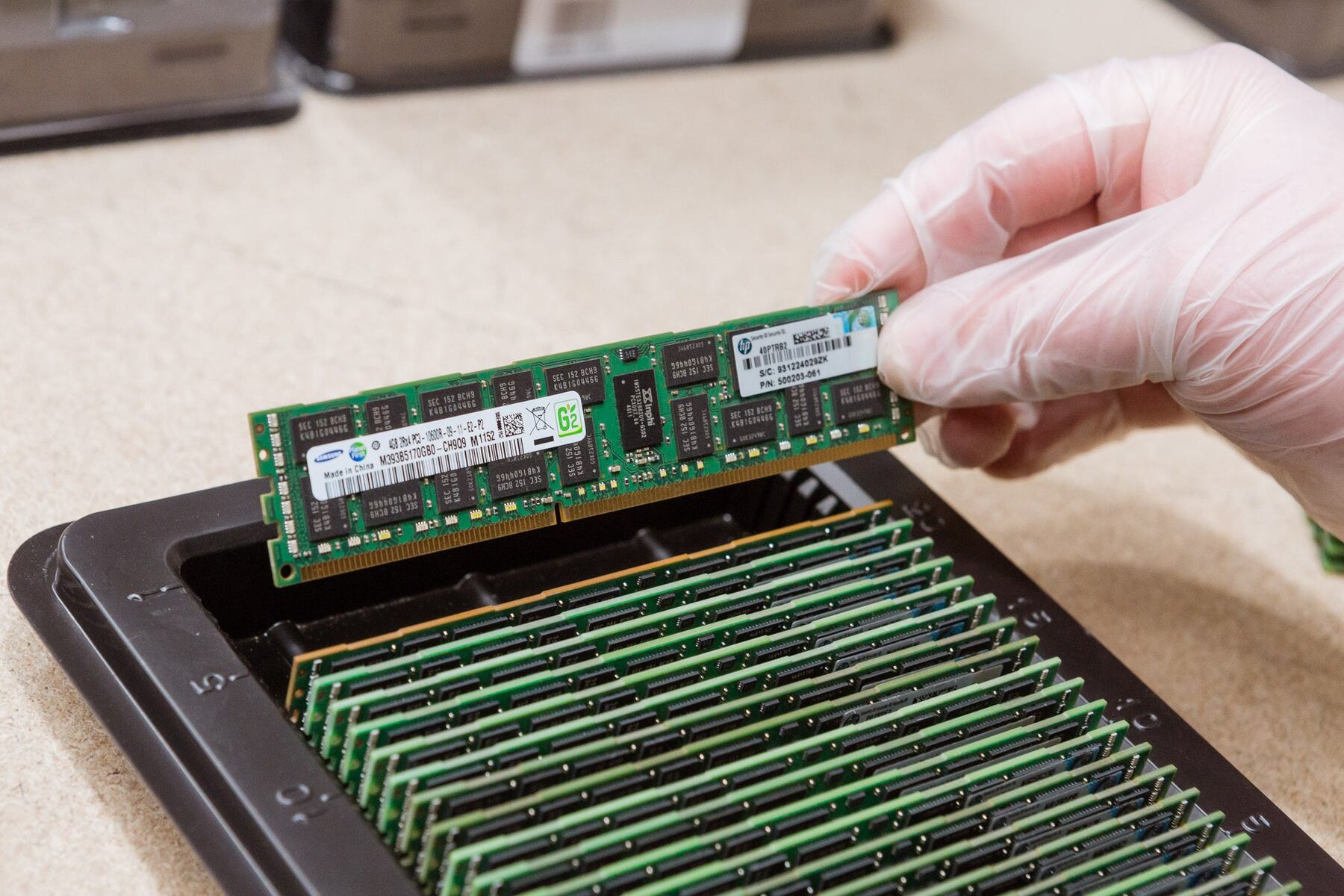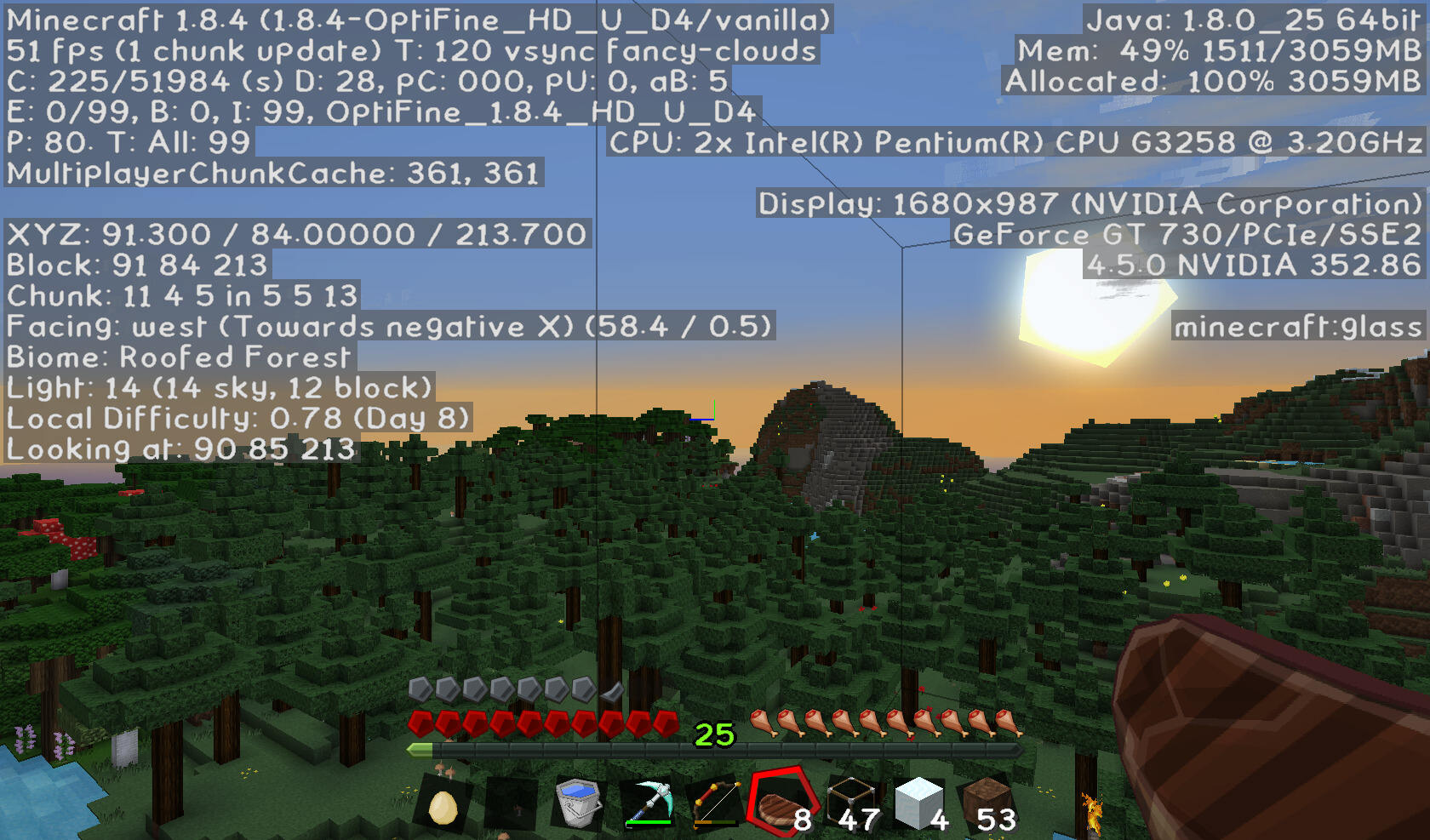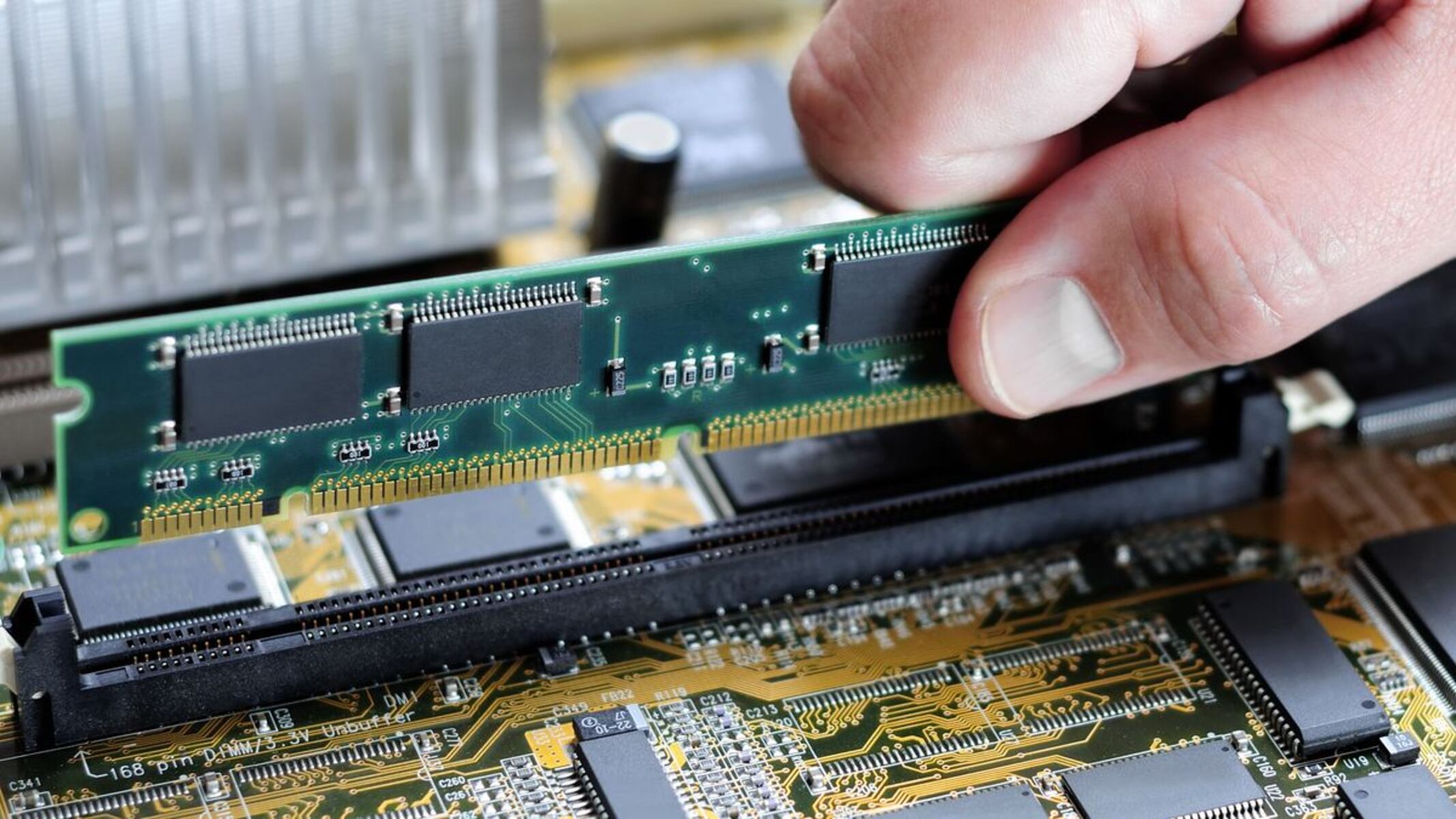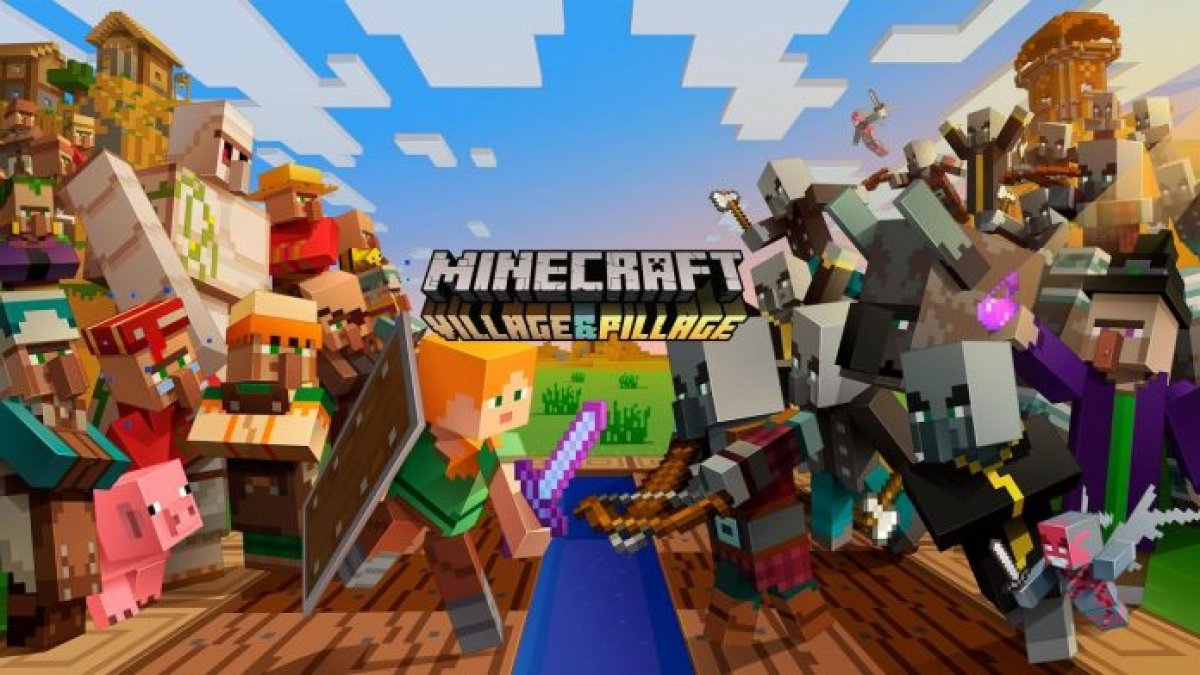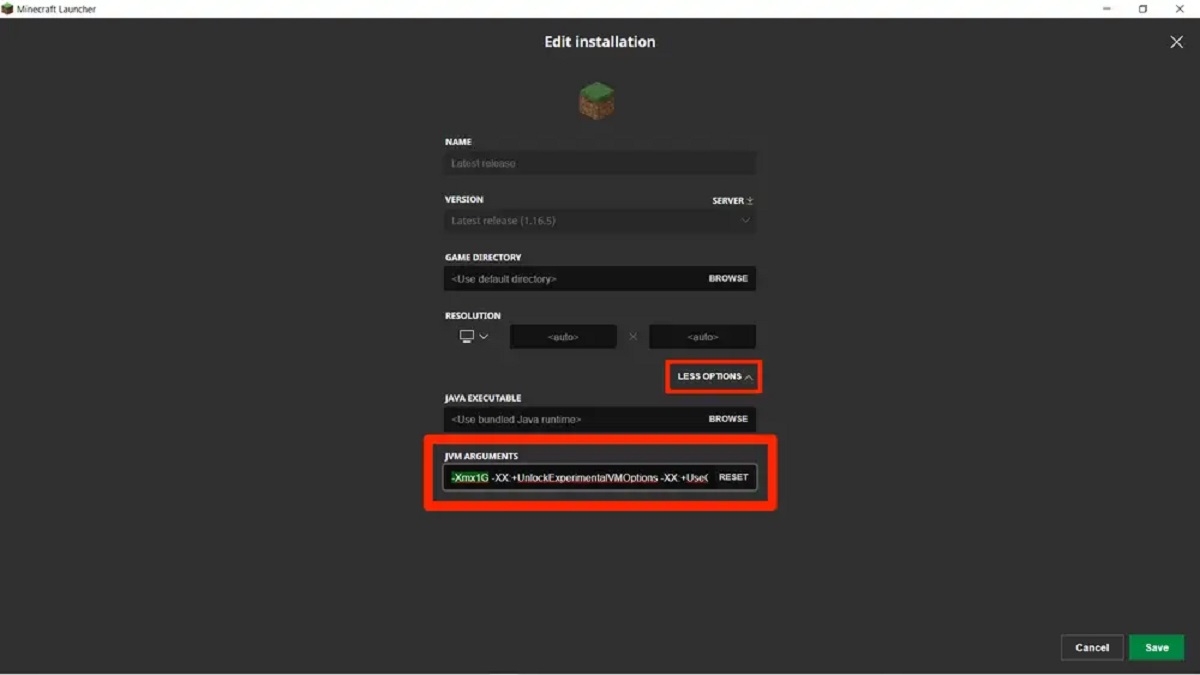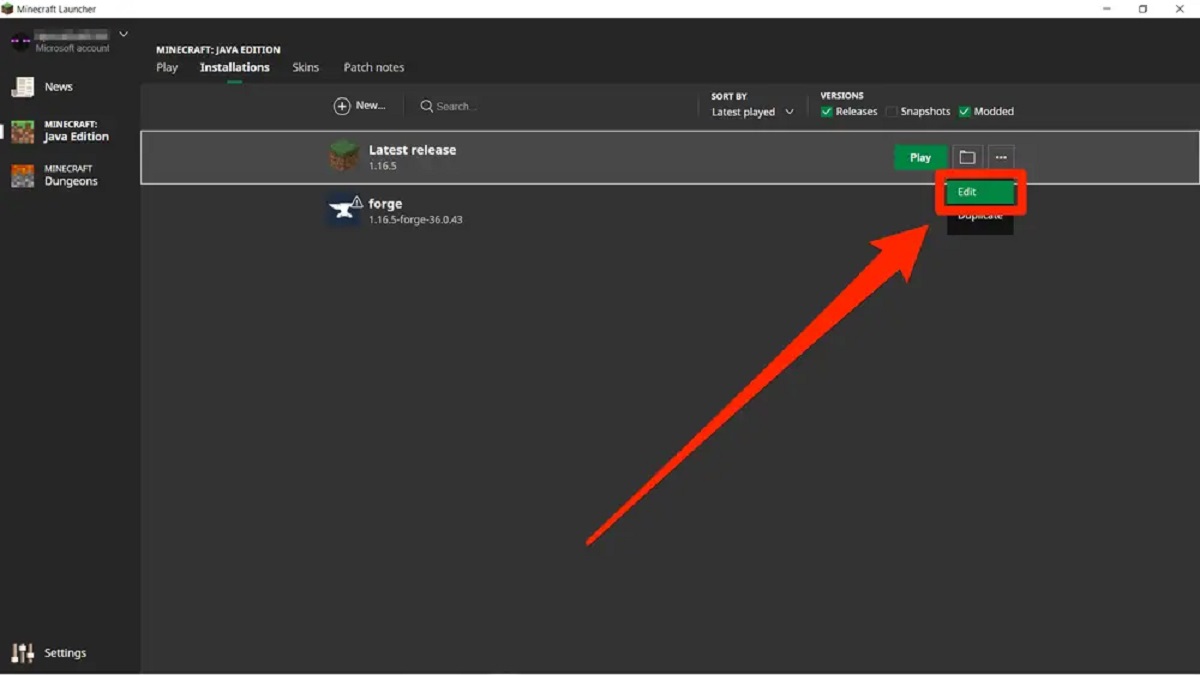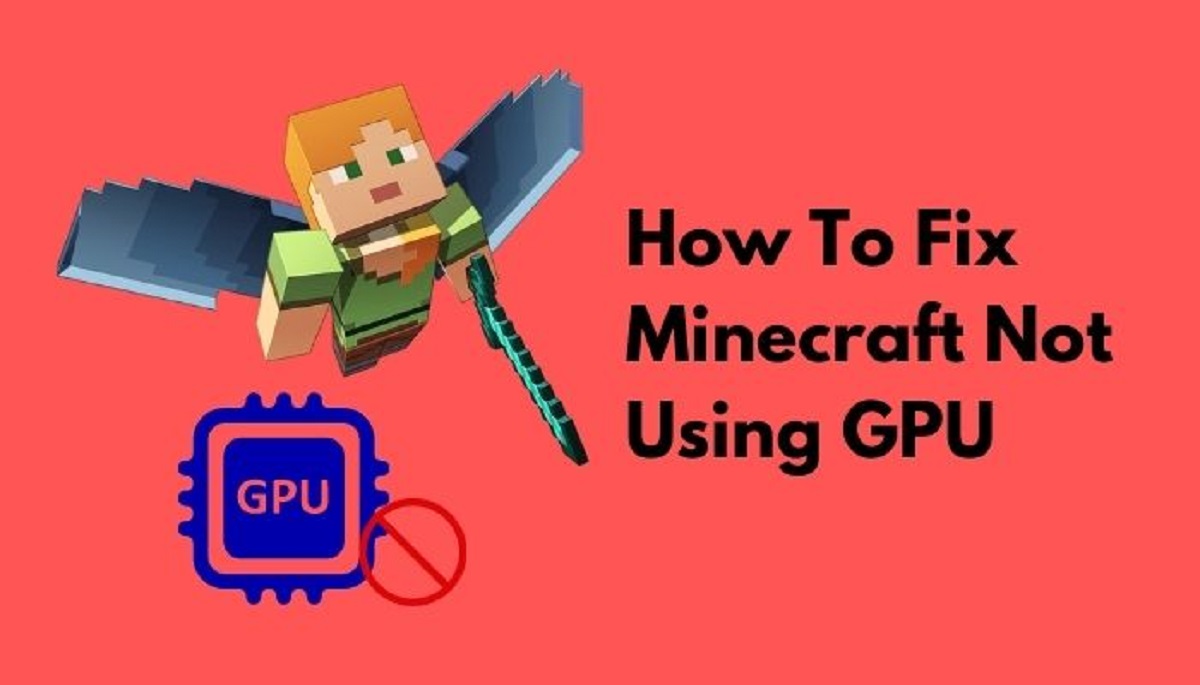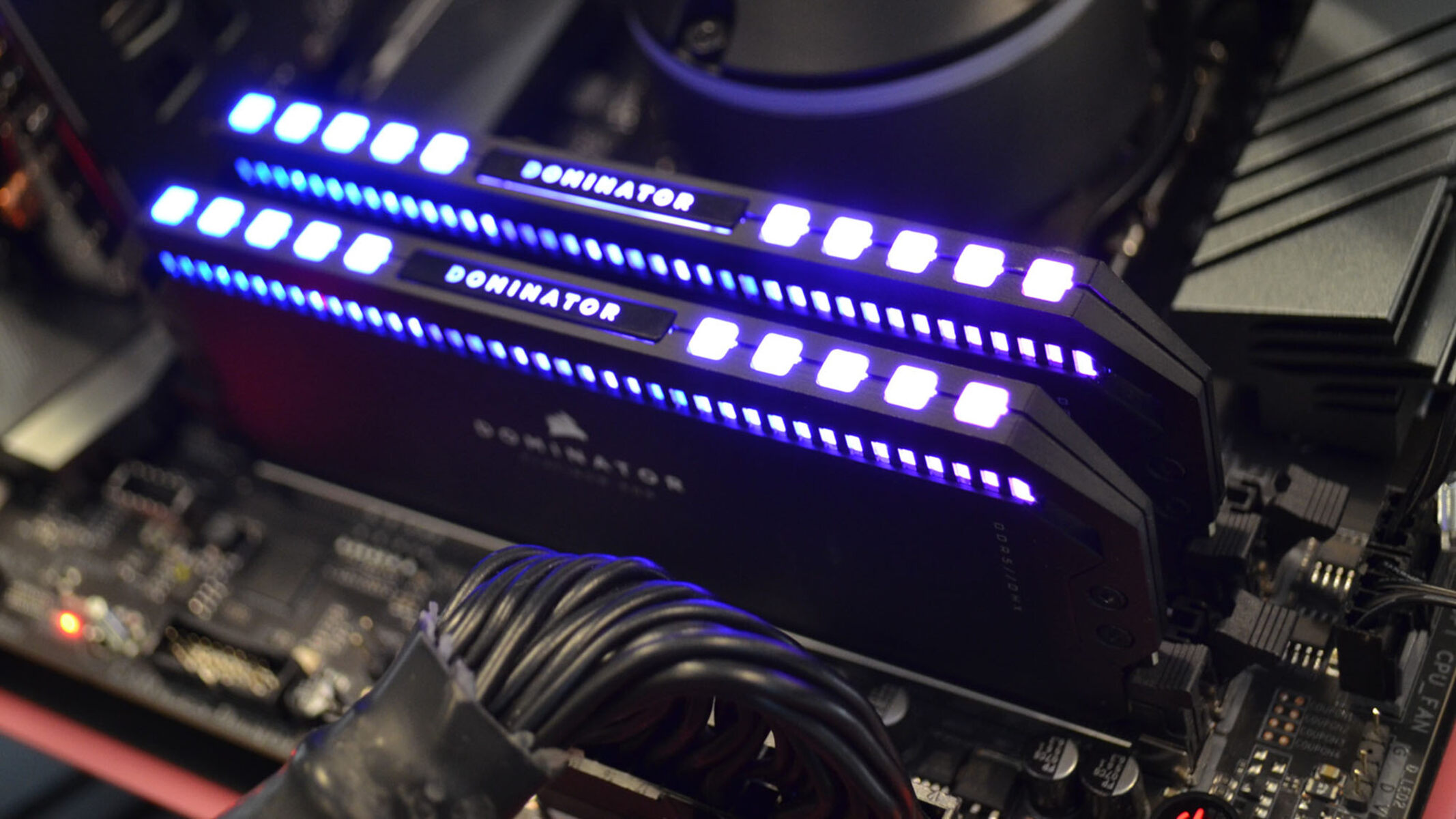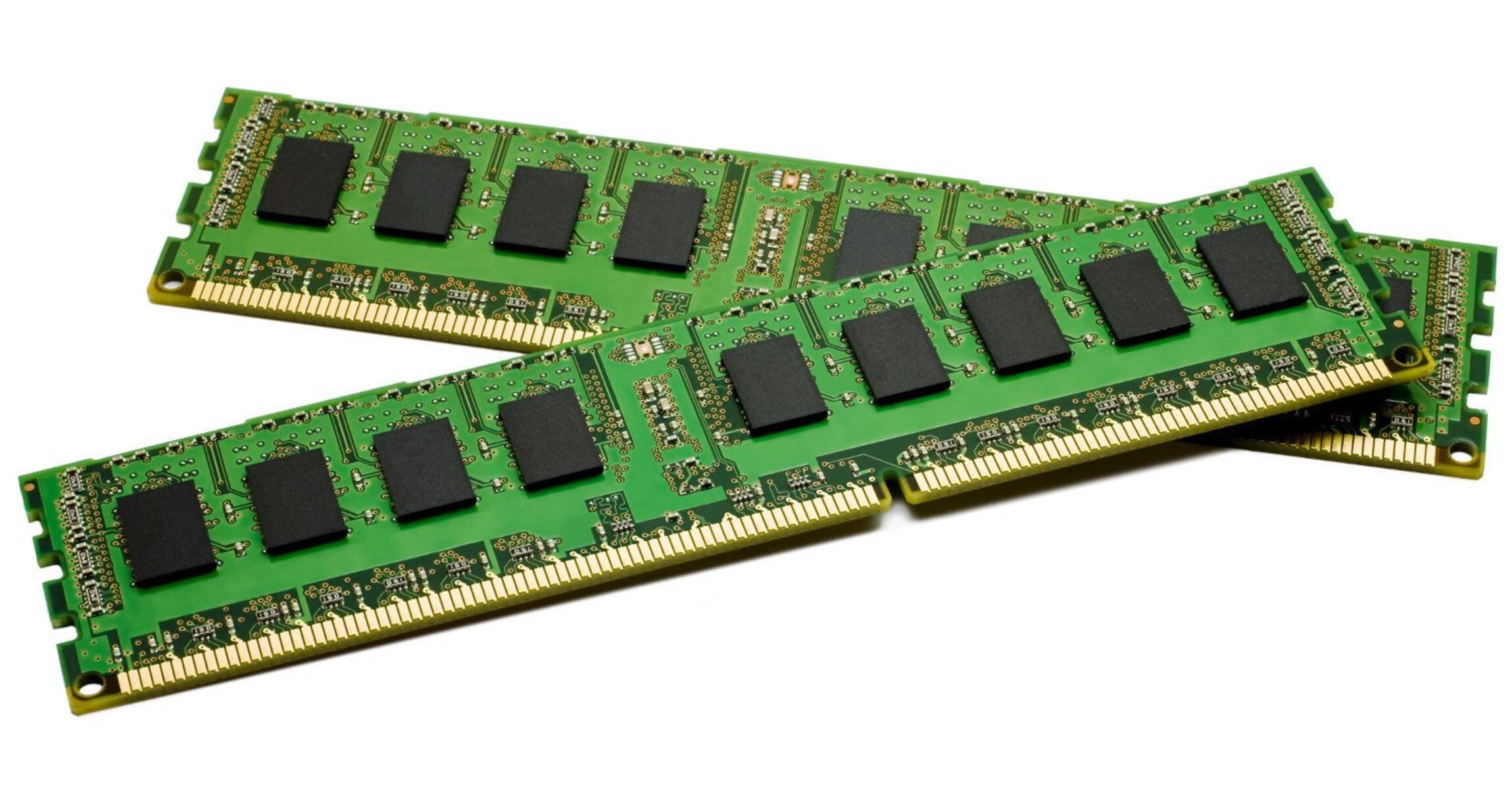Introduction
Minecraft, the immensely popular sandbox game enjoyed by millions of players around the world, offers a vast digital realm for players to explore, build, and survive. Whether you’re creating epic structures, battling dangerous creatures, or delving into the mysteries of the game’s various dimensions, Minecraft provides endless hours of adventure.
However, to fully experience Minecraft’s immersive gameplay and stunning visuals, it’s crucial to have a computer system that can handle the demands of the game. One vital component that directly influences the performance of Minecraft is RAM, or Random Access Memory.
RAM is a type of computer memory that stores data that can be quickly accessed by the computer’s processor. It acts as a temporary workspace for the operating system and running applications, providing the necessary resources for smooth multitasking. In the case of Minecraft, RAM plays a pivotal role in determining how well the game runs, as it affects various aspects of gameplay, including world loading, rendering speed, and overall performance.
Understanding the requirements for RAM in Minecraft is essential to ensure an optimal gaming experience. In this article, we will explore the minimum and recommended RAM requirements for running Minecraft, the factors that influence the amount of RAM needed, and strategies to optimize RAM usage. Whether you’re a seasoned player or new to the game, this information will guide you in configuring your computer’s memory settings for the best Minecraft experience.
Why is RAM important for running Minecraft?
RAM is vital for running Minecraft smoothly and efficiently. The game’s intricate world, complex structures, and dynamic environment require a significant amount of memory to operate without frequent lags or crashes. Here are a few reasons why RAM is important for running Minecraft:
- World Loading: Minecraft generates vast and detailed landscapes, filled with mountains, caves, forests, and oceans. When you enter a new area or load a saved game, the game engine has to fetch and render all the necessary data, including blocks, structures, and entities. Sufficient RAM allows for seamless world loading, reducing the time it takes to explore new areas and ensuring a smooth transition between biomes.
- Render Distance: The render distance in Minecraft determines how far you can see the game world. This feature affects the number of chunks that are loaded and rendered simultaneously. The higher the render distance, the more RAM is required to handle the increased number of visible blocks and objects. Insufficient RAM can lead to reduced render distance, resulting in a limited view of the environment.
- Modifications and Resource Packs: Minecraft’s modding community offers a wealth of modifications and resource packs that enhance the game’s visuals, add new features, or tweak gameplay mechanics. Installing these modifications can significantly increase the RAM requirements of Minecraft. Resource packs, especially those with high-resolution textures and detailed models, consume additional memory for smooth rendering.
- Simultaneous Operations: Minecraft allows players to perform multiple actions simultaneously, such as mining, crafting, exploring, and battling mobs. With limited RAM, the game may struggle to handle all these operations concurrently, leading to slowdowns or freezing. Sufficient RAM ensures smooth multitasking and prevents gameplay disruptions.
- Modded or Customized Worlds: For players who venture into modded Minecraft or create customized worlds using tools like WorldPainter or Chunky, more RAM is required to accommodate the additional data and resources. Modded Minecraft often introduces new blocks, biomes, structures, and creatures, all of which demand more memory for proper functioning.
Overall, RAM is crucial for Minecraft to provide an immersive and lag-free gaming experience. It directly affects factors like world loading, render distance, and the smooth execution of various in-game operations. By allocating sufficient RAM, you can ensure that Minecraft runs optimally, allowing you to fully enjoy all the adventures that the game has to offer.
Minimum RAM Requirements for Minecraft
When it comes to the minimum RAM requirements for Minecraft, it’s important to note that the game’s memory needs can vary based on different factors such as the version of Minecraft, installed mods or resource packs, and the complexity of the world. However, as a general guideline, Minecraft typically requires at least 2GB (2048MB) of RAM to run efficiently.
With this minimum amount of RAM, Minecraft can handle basic gameplay functions and provide a playable experience. However, it’s worth emphasizing that this is the bare minimum requirement, and players may encounter performance issues or limitations when running the game with such a limited amount of memory.
Running Minecraft with only the minimum required RAM may result in a reduced render distance, longer loading times, increased incidence of lag and stuttering, and potential crashes, especially when playing on larger or more complex worlds. Therefore, if you want a smoother and more enjoyable Minecraft experience, it is highly recommended to allocate more RAM than the minimum requirement.
It’s important to mention that the 2GB minimum RAM requirement applies specifically to the vanilla version of Minecraft without any mods or resource packs. If you plan on using modifications or resource packs, you will need additional RAM to accommodate these additions. The more mods and resource packs you have, the more memory you should allocate to ensure stable performance.
It’s worth noting that with the release of newer versions of Minecraft, the system requirements have also become more demanding. While 2GB of RAM is sufficient for older versions, it is advisable to have at least 4GB or more for newer versions, especially if you are using mods or resource packs. This upgraded RAM capacity will allow the game to utilize more memory for improved performance, rendering, and loading times.
In summary, while the minimum RAM requirement for Minecraft is 2GB, it is recommended to allocate more memory for optimal performance, especially if you are using mods or resource packs or playing on newer versions of the game. Allocating additional RAM ensures a smoother gaming experience with improved render distances, faster loading times, and reduced instances of lag and crashes.
Recommended RAM for Minecraft
While the minimum RAM requirement for Minecraft provides a basic playable experience, allocating more RAM can greatly enhance your gameplay and overall performance. The recommended amount of RAM for Minecraft largely depends on the version you are playing, the presence of mods or resource packs, and the complexity of your world. However, as a general guideline, it is recommended to allocate around 4GB to 8GB (4096MB to 8192MB) of RAM for a smoother and more enjoyable Minecraft experience.
By allocating more RAM, Minecraft can take advantage of the additional memory to load more chunks, render distant terrain, and handle complex operations more efficiently. This results in larger render distances, faster loading times, reduced lag, and improved overall stability.
If you enjoy playing with mods or resource packs, it is crucial to allocate even more RAM. These additions can significantly increase the game’s memory requirements. Modded Minecraft, in particular, can utilize a considerable amount of RAM due to the numerous additional features, blocks, and entities introduced by mods. For an optimal experience with mods and resource packs, allocating 8GB or more of RAM is recommended.
It’s important to note that simply allocating a large amount of RAM does not guarantee better performance. If your computer does not have sufficient processing power, allocating excessive RAM may result in diminishing returns. It is recommended to strike a balance between RAM allocation and your computer’s overall capabilities.
Furthermore, the Java version of Minecraft, which is commonly used on Windows, Mac, and Linux, has inherent memory management limitations. Allocating too much RAM may lead to inefficiencies or even crashes. Experimenting with different RAM allocations and monitoring performance is essential to find the optimal balance that works best for your system.
In summary, allocating around 4GB to 8GB of RAM is recommended for Minecraft, depending on the version, presence of mods or resource packs, and the complexity of the world. This provides a smoother and more enjoyable gaming experience with larger render distances, faster loading times, reduced lag, and improved stability. However, finding the right balance between RAM allocation and your computer’s capabilities is important to ensure optimal performance.
How different factors affect the amount of RAM needed
The required amount of RAM for running Minecraft can vary based on several factors. Understanding how these factors influence the amount of RAM needed will help you determine the optimal allocation for your system. Here are some key elements that can affect the RAM requirements of Minecraft:
- Version of Minecraft: Newer versions of Minecraft tend to have more features, improved graphics, and additional gameplay mechanics. These enhancements often come with an increased demand for system resources, including RAM. Upgrading to newer versions of Minecraft may require allocating more RAM to ensure smooth gameplay.
- Mods and Resource Packs: Installing mods and resource packs can significantly impact RAM usage. Mods add new content, mechanics, and functionalities to the game, which require additional memory to run smoothly. Resource packs, especially those with high-resolution textures and detailed models, consume more RAM for rendering. The more mods and resource packs you use, the more RAM you will need to allocate.
- World Complexity: Minecraft allows for the creation of intricate and expansive worlds. The size of your world, the number of structures, the presence of redstone contraptions, and the density of entities such as mobs and animals all contribute to the complexity of the game. Larger and more complex worlds require more RAM to handle the increased amount of data and resources.
- Render Distance: The render distance setting determines how far you can see in the Minecraft world. A higher render distance means more chunks are loaded and rendered simultaneously, requiring additional RAM to handle the increased workload. If you prefer a larger render distance for a more immersive experience, you’ll need to allocate more RAM accordingly.
- Simultaneous Operations: Minecraft allows for simultaneous actions such as mining, crafting, exploring, and battling mobs. The more actions you perform simultaneously, the more RAM is required to handle the workload. Activities like massive redstone contraptions, complex automated farms, and crowded multiplayer servers can significantly increase RAM usage.
It’s important to note that these factors are not mutually exclusive, and they can collectively impact the RAM requirements of Minecraft. For example, playing with mods on a large, complex world with a higher render distance will necessitate a substantial allocation of RAM.
Experimenting with different RAM allocations and monitoring performance is key to finding the optimal balance for your specific setup. Adjusting RAM allocation based on these factors will ensure that Minecraft runs smoothly, without lags, crashes, or other performance issues.
In summary, various factors such as the version of Minecraft, mods and resource packs, world complexity, render distance, and simultaneous operations affect the amount of RAM needed. Considering these factors and adjusting your RAM allocation accordingly will provide a smoother and more enjoyable Minecraft experience.
Strategies to optimize RAM usage in Minecraft
Optimizing RAM usage in Minecraft is crucial for maintaining smooth gameplay and reducing performance issues. Here are some strategies that can help you make the most out of the allocated RAM:
- Close unnecessary background applications: Closing unnecessary programs running in the background frees up system resources, including RAM. Close any resource-intensive applications that are not needed while playing Minecraft to allocate more memory to the game.
- Use lightweight mods and resource packs: Choose mods and resource packs that are optimized to use fewer system resources. Lightweight mods and resource packs tend to have smaller file sizes and are designed to be more efficient in their memory usage. Opting for these lighter alternatives can help reduce the overall RAM usage of Minecraft.
- Configure Java settings: Minecraft runs on the Java platform, and adjusting specific Java settings can have a significant impact on RAM usage. Changing the Java runtime parameters, such as the maximum memory allocation (-Xmx) and the initial memory allocation (-Xms), can optimize memory usage. Experiment with different values to find the optimal settings for your system.
- Lower render distance: Reducing the render distance in Minecraft can significantly decrease RAM usage. Lowering the render distance decreases the number of loaded chunks and the amount of data that needs to be stored in memory, freeing up RAM for other processes. Finding a balance between a satisfactory render distance and RAM utilization is key.
- Optimize Java Garbage Collection: Java Garbage Collection is responsible for managing the memory usage of running applications. Minecraft’s performance can be improved by optimizing the Garbage Collection algorithms. Tweaking the Garbage Collection settings in the Java parameters can help reduce the frequency and impact of memory clean-ups, minimizing performance hiccups.
- Manage entities and redstone contraptions: Excessive entities and complex redstone contraptions can strain RAM usage in Minecraft. Reducing the number of entities, such as mobs and animals, and optimizing redstone contraptions can help alleviate the memory burden. Consider using entity-clearing commands or using more efficient redstone designs to reduce the strain on RAM.
- Remove unused or incompatible mods: Unused or incompatible mods can contribute to increased RAM usage and potential conflicts. Regularly review and remove any mods that are no longer needed or causing performance issues. Keeping your mod list lean and ensuring compatibility can help optimize RAM usage and overall game performance.
By implementing these strategies, you can optimize RAM usage and improve the performance of Minecraft on your system. However, it’s essential to note that performance optimization may require some experimentation and adjustments to find the optimal balance for your specific hardware setup.
In summary, optimizing RAM usage in Minecraft involves closing unnecessary background applications, using lightweight mods and resource packs, configuring Java settings, lowering the render distance, optimizing Java Garbage Collection, managing entities and redstone contraptions, and removing unused or incompatible mods. By employing these strategies, you can optimize RAM usage and enhance the overall performance of Minecraft.
Tips for Allocating and Managing RAM for Minecraft
Allocating and managing RAM effectively is essential for a smooth and optimal Minecraft experience. Here are some tips to help you allocate and manage RAM for Minecraft:
- Determine your system’s available RAM: Before allocating RAM to Minecraft, it’s crucial to know how much RAM your computer has. Check your system specifications or use system monitoring tools to identify the available RAM. It’s recommended to leave some RAM for the operating system and other background processes.
- Allocate an appropriate amount of RAM: Based on the factors we discussed earlier, allocate an appropriate amount of RAM for Minecraft. Allocate enough memory to handle the game’s requirements, including mods, resource packs, and the complexity of your world. A good starting point is 4GB of RAM, but you may need to increase it based on your specific setup.
- Use the correct Java version: Minecraft relies on Java to run, and using the correct version of Java is essential for optimal performance. Make sure you have the latest version of Java installed and ensure that Minecraft is configured to use the correct Java version.
- Modify Java runtime parameters: Adjusting the Java runtime parameters can significantly impact the RAM usage and overall performance of Minecraft. Experiment with changing the maximum memory allocation (-Xmx) and initial memory allocation (-Xms) values to find the optimal settings for your system. This can help fine-tune the memory usage of Minecraft.
- Regularly monitor performance: Keep an eye on your system’s performance while playing Minecraft. Use built-in tools or third-party software to monitor RAM usage, CPU usage, and other performance metrics. This will help you identify any performance bottlenecks or excessive RAM usage that may require adjustment.
- Optimize Minecraft settings: Minecraft offers various in-game settings that can impact RAM usage. Adjusting settings like render distance, graphics quality, particles, and entity view distance can help optimize the game’s performance and reduce RAM usage. Experiment with different settings to find the right balance between visual quality and resource consumption.
- Regularly update and maintain your mods: If you use mods in Minecraft, it’s crucial to keep them updated. Mod updates may include bug fixes, performance optimizations, and improved memory management. Additionally, periodically review your mods and remove any that are no longer needed or causing performance issues.
- Close other resource-intensive programs: Close any unnecessary programs running in the background while playing Minecraft. Resource-intensive applications, such as web browsers or resource-heavy software, can consume significant amounts of RAM and affect Minecraft’s performance. Closing these applications frees up RAM for Minecraft to utilize more effectively.
By following these tips, you can allocate and manage RAM efficiently for Minecraft, ensuring a smoother and more enjoyable gaming experience. Remember that finding the ideal RAM allocation and settings may require some experimentation and adjustments, as every system is different.
In summary, determine the available RAM, allocate an appropriate amount for Minecraft, use the correct Java version, modify Java runtime parameters, regularly monitor performance, optimize Minecraft settings, update and maintain your mods, and close other resource-intensive programs. Applying these tips will help you optimize RAM allocation and management, resulting in improved performance and a better Minecraft experience.
Conclusion
In conclusion, RAM plays a crucial role in running Minecraft smoothly and efficiently. By understanding the minimum and recommended RAM requirements for the game, you can ensure that it operates optimally on your system. Allocating the right amount of RAM, based on factors such as the version of Minecraft, presence of mods or resource packs, and complexity of your world, is essential for a seamless gaming experience.
Implementing strategies to optimize RAM usage, such as closing unnecessary background applications, using lightweight mods and resource packs, and configuring Java settings, can greatly enhance performance and stability. Additionally, managing RAM effectively through tips such as lowering render distance, optimizing Java Garbage Collection, and removing unused or incompatible mods, can further improve the overall performance of Minecraft.
Remember to monitor performance and make adjustments as needed, as every system is unique. Regularly updating and maintaining mods, as well as closing other resource-intensive programs, also contribute to efficient RAM management for Minecraft.
By following the guidelines and tips outlined in this article, you can ensure that your Minecraft experience is smooth, enjoyable, and free from performance issues. Allocating and managing RAM effectively will allow you to fully immerse yourself in the endless adventures and creative possibilities Minecraft has to offer.







